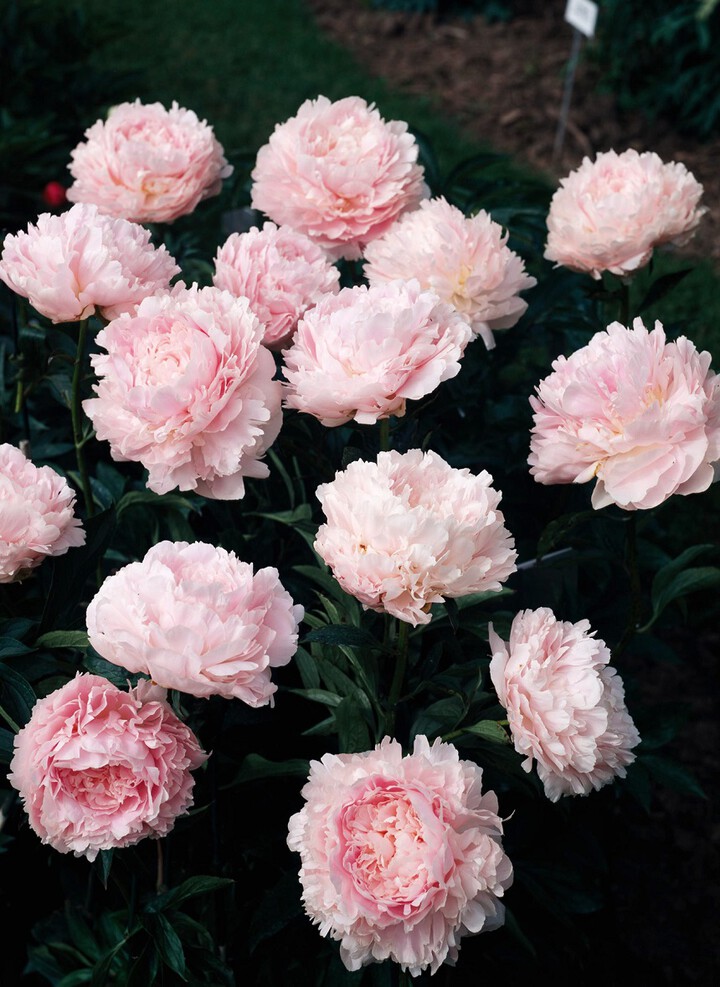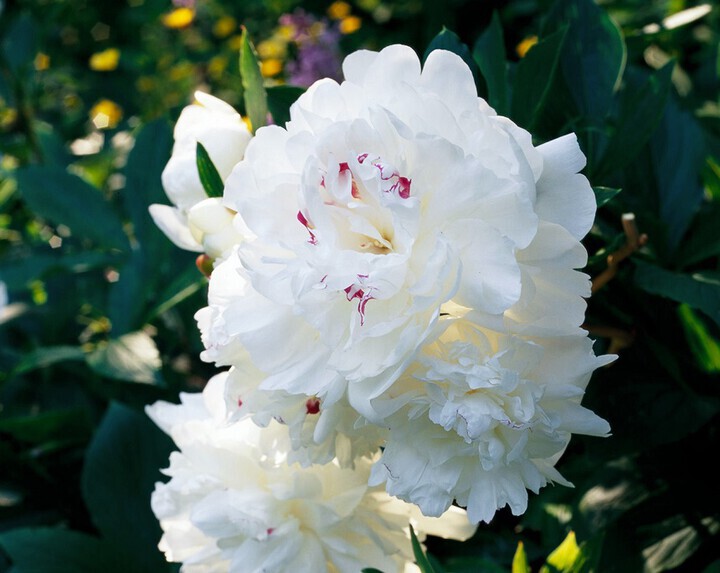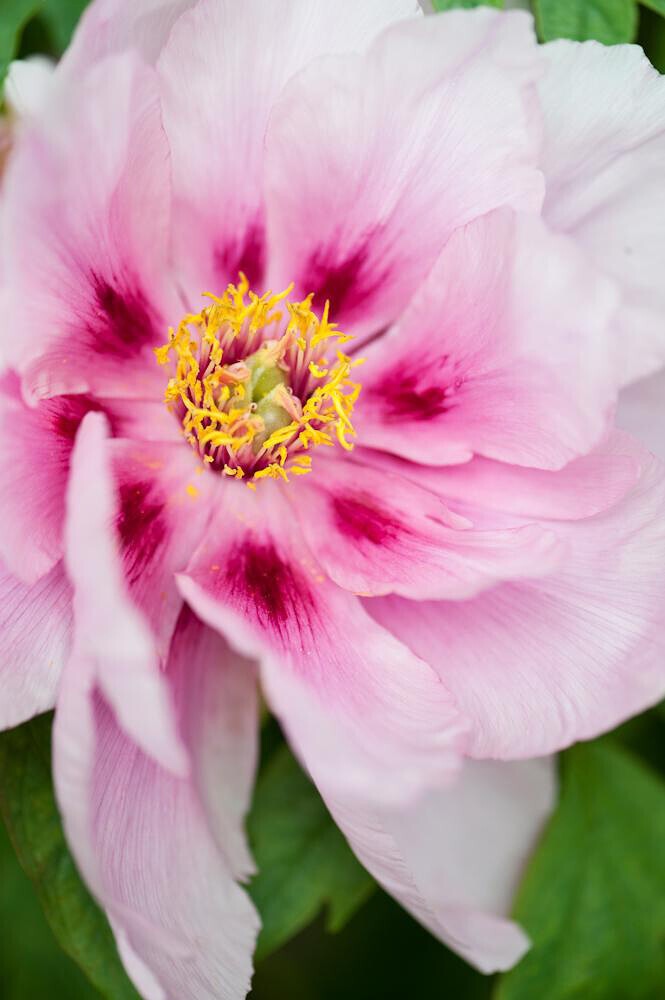With their dramatic, showstopping blooms and sweet scent, peonies make a beautiful addition to any bouquet or garden. Although pink is a fan favorite, peony colors also include white, red, yellow, and orange. The plants may look delicate, but with the proper conditions, they prove themselves to be quite hardy and easy to grow. Peonies also perform well outside your garden; you can enjoy cut peonies in a vase for up to three weeks with the right upkeep, or dry them to admire their colors for even longer. Peonies are hardy in USDA Zones 3-8, which includes most of the U.S., so just about anyone can grow a few thriving plants in their garden.

Types of Peonies
Peonies come in three main types: Herbaceous, tree, and itoh. Herbaceous peonies (Paeonia lactiflora) are the most common in gardens, with hundreds of varieties to choose from. These varieties usually have scented flowers that come in shades of pink, red, and white. As the name suggests, herbaceous peonies don’t form woody stems. Instead, its stems stay green and flexible, so they may need staking to keep them from flopping over, especially when the flowers get wet in the rain. These peonies produce fresh growth from the plant's crown in spring, which all dies back to the ground after a frost, similar to most other perennial plants. They grow between 2-3 feet tall.
Buy It: 'Pillow Talk' Bareroot Herbaceous Peony, $19.98, The Home Depot
Like the name tree peony suggests, these plants grow from a trunk-like base (Paeonia suffruticosa or Paeonia lemoinei, also called deciduous peony). They are more expensive and grow at a slower pace, but they can eventually reach up to 5 feet tall. They also don't need any staking because their woody stems can stand up to the weight of the huge flowers. And we mean huge! For example, ‘Seidai’ is a tree peony variety that produces double flowered pink blooms that can reach 8 inches in diameter.
The itoh peony, or intersectional peony (Paeonia lemoinei x Paeonia lactiflora), is a hybrid of the first two types. Itoh peonies offer more unusual colors, such as orange and yellow. Some popular varieties include ‘Bartzella’ and 'Cora Louise'. They grow to a middle height between the garden and tree types, usually about 3 feet tall.

How to Plant Peonies
Peonies are sold as bare-root tubers or as divisions of a young peony plant. Plant them in the fall, a few weeks before the first frost. If you need to move an established plant, this is also the time to do it. If you have to plant in the spring, check that the ground is workable and that there's no risk of frost. Know that spring-planted peonies will usually lag a year behind fall-planted peonies.
Space peony plants 3-4 feet apart to allow them plenty of room to grow. A sure way for a plant to lack blooms is to plant it too deeply: Peonies shouldn’t be placed more than 2 inches below the soil level. Otherwise, they’ll still send out shoots but they won’t flower. Plant your peony in full sun (where it receives at least six hours of direct sunlight every day) and well-drained soil. Make sure the spot you choose will allow the plant to have undisturbed roots. Give it shelter from wind, but don’t plant it too close to other trees or shrubs or the plants will compete for resources.

How to Grow Peonies
Water peonies at the base of the plant at ground level rather than on the foliage, which will help prevent diseases from taking hold. Give them enough water to soak into the top 5 inches of soil. Continue to water your plants even after the flowers have faded so the leaves remain healthy.
To feed your peonies, apply compost, bonemeal, or well-rotted manure in early summer as a soil amendment. You can also use a fertilizer with higher levels of phosphorus (P) and potassium (K). Avoid nitrogen-heavy (N) fertilizers. These will give you good foliage growth but discourage strong blooms.
You may see lots of ants on peonies. Don’t fret; they won’t harm your plant! Just ignore them and they’ll eventually leave to feed elsewhere. You should inspect your plants for signs of common peony diseases, though. Here are a few to watch out for:
·Botrytis blight: Happens in damp seasons when leaves get too wet and develop dark gray mold.
·Powdery mildew: Mildew shows up as a white powder. It’s unattractive more than it is harmful to your plant.
·Peony blotch: Also known as red spot or the measles for the color of the lesions. It won’t kill your plant, but it does disfigure it.
· Peony wilt: A fungal infection in the soil that leads to the destruction of the leaves and stems. Unfortunately, it usually results in plant death.

How to Care for Peonies After They Bloom
After your peonies have put on their show for the year, a little TLC will ensure that they come back even stronger next year. Deadheading, or removing faded flowers, helps the plant save energy for next year’s blooms and prevents fungal diseases. Only remove the spent blooms, and don't cut away any foliage (the plant will need those leaves to help build up flowers for next year).
For herbaceous peonies, you can cut the whole plant to the ground after a fall frost has killed off the foliage. Then, in the spring new growth will appear from the roots. For tree peonies, prune them in late spring. Be sure to remove any damaged wood. Make your cuts at an angle, right above outward-facing buds.